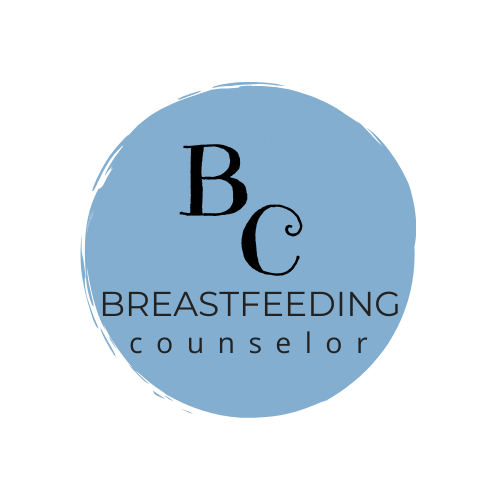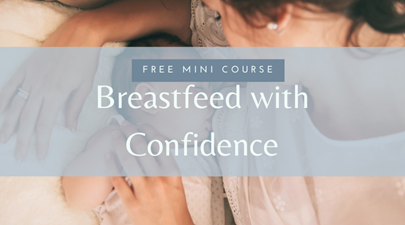Breastfeeding can be a challenge in the first few days to weeks of life, but there’s no doubt it’s worth it and is the best possible nutrition for babies. We want to help you get started breastfeeding strong.
In fact, the World Health Organization recommends to breast feed until 2 years of age. The American Academy of Pediatrics recommends exclusive breast milk for the first six months and continuing to supplement with foods throughout the 1st year.
Now that we have other options to feed our children within the first six months, it’s important to be fully educated on what breastfeeding is like and how to be successful at breastfeeding. I hope you find this information helpful to decide if breastfeeding is right for you and your child.
Here are the most common questions about breastfeeding:
What’s in Breast Milk Anyway?
- Components
of Breast Milk
- Water, carbohydrates, fats, proteins, vitamins, and minerals
- Antibodies to fight infections and enhance immunity
- Foremilk-Lactose, protein, and water
- Hindmilk-More fat than foremilk
How do I get started breastfeeding?
The first hour
Within the first hour of giving birth it’s best if you have your baby skin to skin and allow him or her to let you know that they are ready to eat. It’s amazing how your baby will know exactly what to do but oftentimes us moms don’t know what to do. You want to make sure to bring your baby to the breast and not the breast to the baby.
The breast sandwich
You can hold your breast in a sandwich position squeezing between the thumb and forefinger into a “C” shape just behind the areola. Then, wait for a wide-open mouth and bring the baby to the breast taking in as much areola as possible. Imagine you are eating a big sandwich, this is how the baby should look coming onto the breast.
Sounds of reassurance
You should hear baby making swallow sounds, after a few minutes of feeding on one side you can switch to the other.
If you feel like you may need an in-depth course to begin breastfeeding, my course Breastfeeding Basics is available now!
How often will I feed?
At least 8 times, but usually 10-12 times every 24 hours. If your baby is mouthing at his or her hands, smacking their lips, and turning their head with an open mouth a.k.a. “rooting”, they are likely hungry. Take these early feeding cues and feed the baby. Don’t wait until he or she is crying, because crying is usually a late hunger cue.
Usually a baby will feed around 20 minutes or more per side. Don’t worry if it feels like baby is taking forever to eat, babies do need to suck for comfort as well. If baby is dozing off and losing interest, he or she may be done.
How do I know if baby is getting enough?

Many mothers often wonder if they’re making enough milk for their babies. Rest assured that your body knows what to do when it’s time to feed your baby. It’s a simple process here of supply and demand. So if your baby is eating frequently that’s completely normal and does not mean you have a low milk supply. Babies go through growth spurts and cluster feeding times so if you feel like your baby is eating all the time, especially in the evening, don’t worry- just continue to breastfeed.
Monitoring diaper output
Babies in the beginning will produce around 6 wet diapers, but this can vary greatly. Speak with your doctor and make sure you know how many wet and dirty diapers they expect for the stage of life your baby is in. Your baby will start gaining weight after the hospital and your doctor can advise you on how much is enough.
If you feel like you may have a milk supply issue you can contact me today.
Will breastfeeding hurt?
Breastfeeding should not hurt beyond some initial nipple soreness that comes from teaching your baby a proper latch on. If you are experiencing pain, it may be a sign that something is wrong with the latch or other things.
Please reach out me if you feel you need to consult further about breast or nipple pain.
What if I’m returning to work?
You may have already purchased your breast pump early on but if you’re preparing to return to work and continue breastfeeding then you will want to make sure you have one for sure.
Make sure to notify your manager or human resources of your company and let them know that you are going to need a space to express your milk when you do return to work. So many mothers work and continue breastfeeding for a long time.
How long should I breastfeed?
Now that you have an idea of what it’s like to breast feed your baby you want to go ahead and set up a goal for the time frame that you would like to breastfeed.
Keep in mind this goal will be a guideline for you don’t get down on yourself if something happens and you’re unable to meet your goal but I’d love to encourage you that more often times than not many women reach their goals and set a new goal after they’ve reached their goal. For instance, with my first child I wanted to make it 6 months but I was able to make it a full year. My second child, I knew I wanted to go at least 8 months, and I breastfed my second for 16 months.
Remember, though, my goal is not your goal. You will definitely want to set one for yourself.
When should I seek professional help?
If you feel any pain beyond the initial latch on.
If you notice redness or fever on the breast-this could be a sign of Mastitis.
If your baby has white on their tongue that won’t come off and/or your nipples have a stinging sensation while breastfeeding. This could be a sign of thrush.
If your baby has trouble latching or baby is not transferring milk well.
If you have had breast surgery in the past.
Baby is not gaining weight, or gaining slowly.
If your baby is born premature.
I hope this helps you get started with breastfeeding strong! If you have anymore questions, please email me at [email protected]


Recent Comments